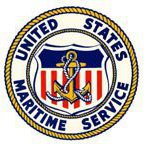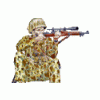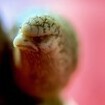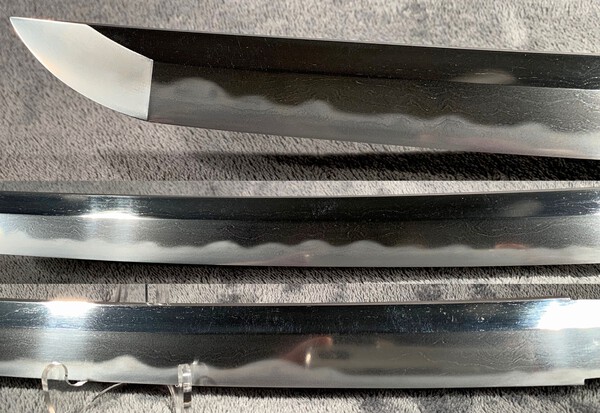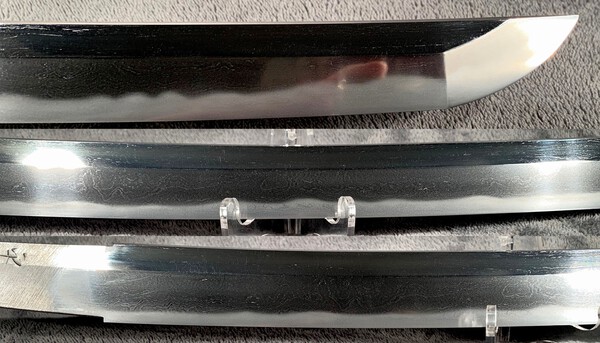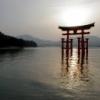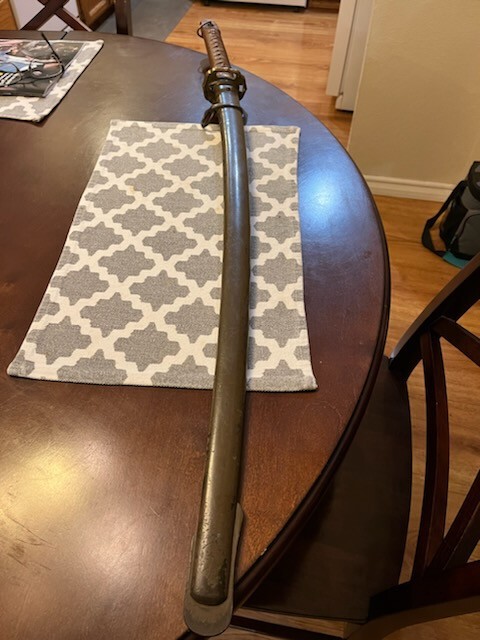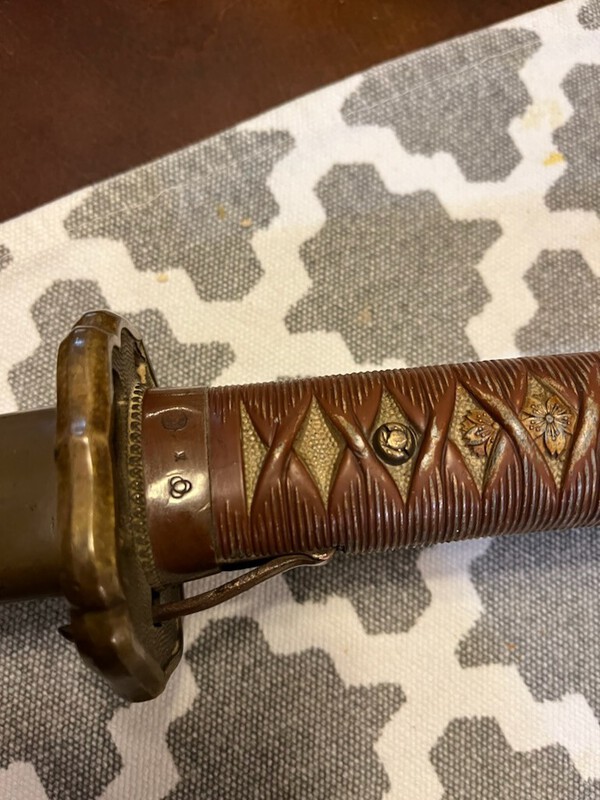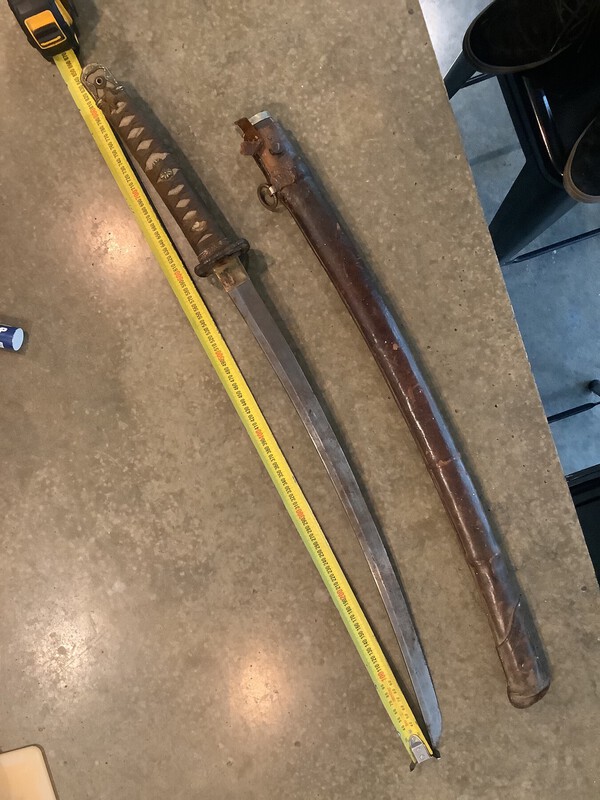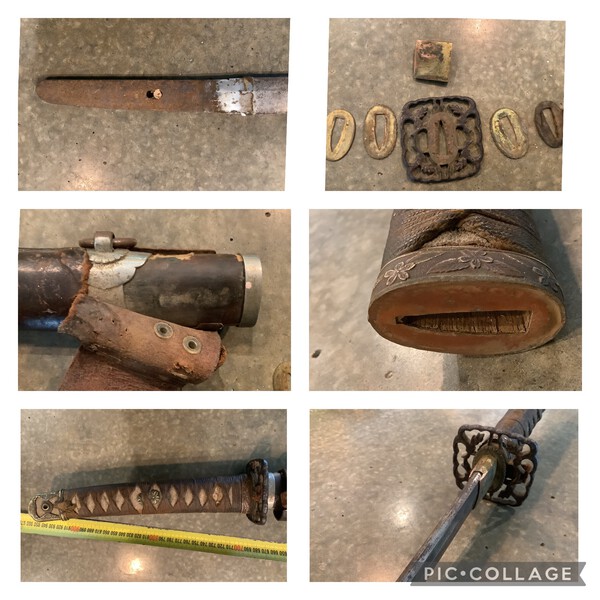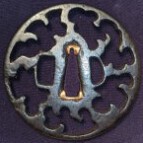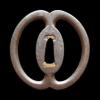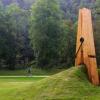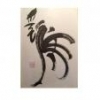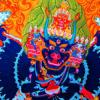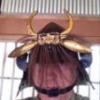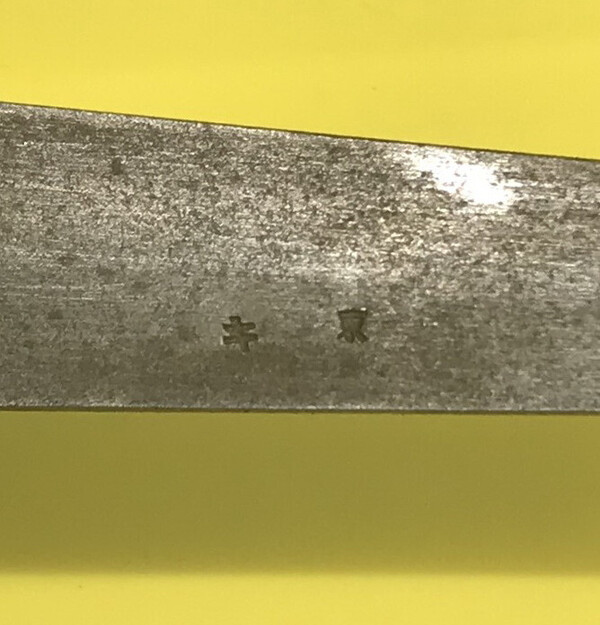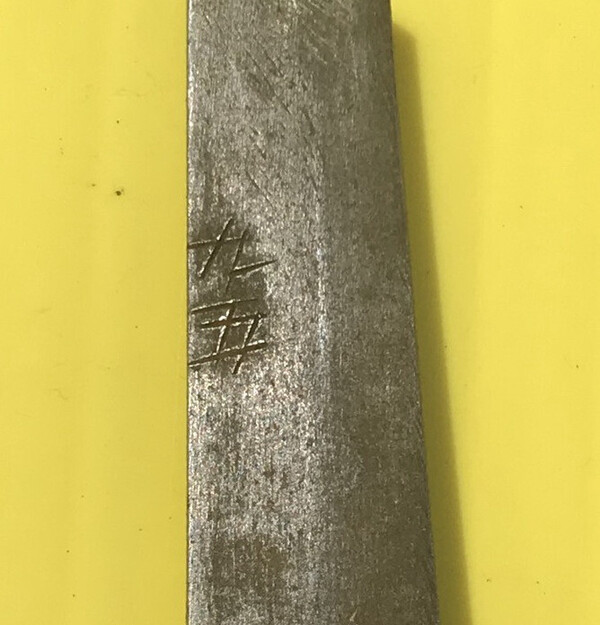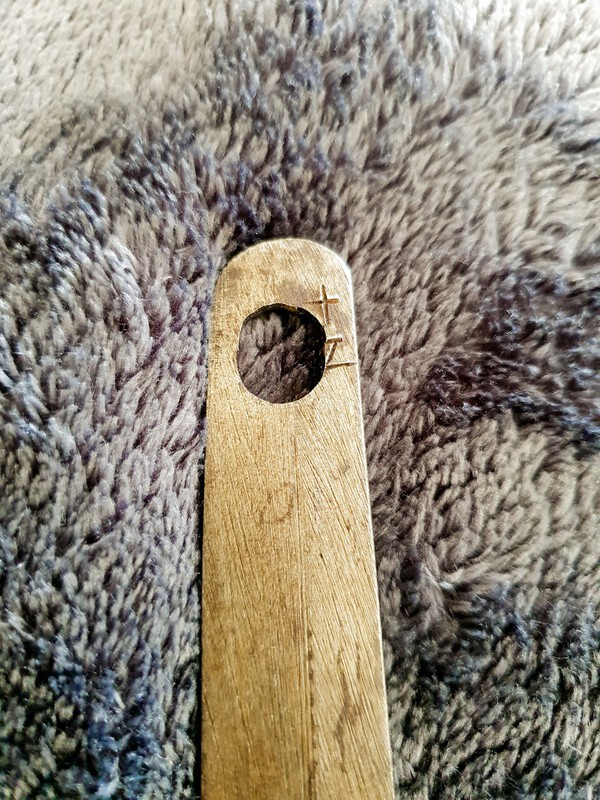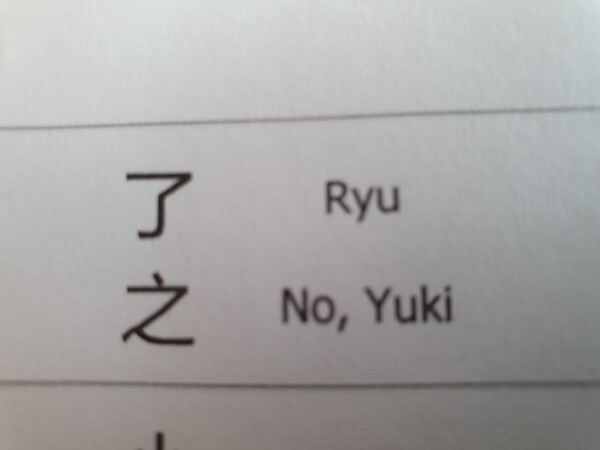Leaderboard
Popular Content
Showing content with the highest reputation on 11/17/2022 in Posts
-
This week I was happy to receive news that my mumei Yamato Taima daito attributed to Cho Aritoshi made Juyo. It will be awhile before I see the sword again, a good time to find more info on Cho Aritoshi. I've found the basic linage on data on him, but I hope to find out what pointed to him specifically. Mr. Tanobe wrote an extensive (covering entire shirasaya) prior to shinsa. This will eventually be translated to reveal this info (hopefully). Also the Juyo description will hold answer but that comes in the future. meanwhile, I wonder 1) how many Juyo Token have been attributed to Cho Aritoshi; 2) available, what was said about him on the Zufo description; 3) one past topic was from a member who had a TokuHo with sayagaki to Cho Aritoshi. Has that been translated? This is the fun part, to learn as much as possible about this wonderful sword. Thanks in advance. Ron STL9 points
-
Dear Matthew. Welcome to NMB. Chris has given you a very condensed answer so let me unpack it a bit for you. Most swords carried during WWII are known as Shingunto, type 98 refers to a specific variant of these mounts. They are not mass produced in the conventional sense but they are all made to a specification. However it is often the case that older blades were remounted to carry to war, it used to be assumed that these were family blades given to the son to carry, in fact many of them were used to save on manufacturing and resources. Much less romantic and of course, impossible to say which applies to your sword. It is impossible to give you much information about the blade from photograps but if I had to guess I would suggest that it might be a Koto blade, which means from before 1600 Yours also has an older tsuba, the guard. A decent shot of this posted in the Tosogu section might attract some information. (Tosogu means fittings and a lot of collectors specialise in this.) Another intteresting feature is the hanger on the scabbard which is somewhat unusual and may suggest that the original scabbard was used under the leather combat cover. Any cleaning that you do should only ammount to wiping the blade with a light oil and perhaps some leather cream on the combat cover, anything else will harm the sword. If you do decide to do a full restoration then brace yourself, it's an expensive process. You may wish to preserve as is. It's an important link to your Grandfather and what he did. For a lot more information you might like to have a look here, http://ohmura-study.net/900.html Grab a coffee, there's a lot to go through! Feel free to ask further questions. All the best.8 points
-
I'll not resubmit my sword. It is just a certificate, and does a Masayuki/Kiyomaro blade absolutely need Juyo papers? Even if it would influence its potential value it wouldn't matter to me since I'll be keeping it anyway. Plus, to be honest, after more than three years of it out of hands I am really highly looking forward to see it again .5 points
-
Congratulations 1) So far I believe there have been 39 swords by Aritoshi smiths or attributed as, in the 67 sessions. There are 4 signed tachi that have been awarded Jūyō status, and the one signed 長有俊 has been elevated to Tokubetsu Jūyō. I have found 2 other signed tachi by Aritoshi and one is dated to 1298, making the total of 6 signed tachi that I have been able to find so far. There is also gakumei katana signed 長有俊 that has made Jūyō. I cannot really say which is 1st gen and which is 2nd gen (Chō Aritoshi) but I took a look on the mumei attributions at Jūyō and I noticed I had made errors in falsely combining these 2 smiths under one category in my index and I just sorted it out. It seems that following are for towards Chō Aritoshi. 1 signed tachi, 1 gakumei katana, 13 mumei swords with Chō Aritoshi attribution and 7 swords with den Chō Aritoshi attribution. So I believe in total there would be 22 Jūyo swords that are towards Chō Aritoshi and 17 that are attributed towards the 1st gen. Of course this is only by looking at the one line attribution and not digging into what is said about these particular swords in the text portion.5 points
-
Hi Ron, congratulations! I have a juyo (den) Cho Aritoshi that I really enjoy. See attached. My assumption also based on the settsu-mei has been that there were two generations Aritoshi with Cho Aritoshi being the second generarion. I have not finalized the translation in full but most of it is attached with help of a Japanese friend who is not a nihonto student so I need to edit some terminology still. Description It is said that Aritoshi was a swordmaker belonged to Yamato taima (or taema) school and he has two names: one is Aritoshi (有俊) consisting of two Chinese characters and another is Cho Aritoshi (長有俊) consisting of three Chinese characters. The former one can be seen produced in Einin 6 (1298). It is a common theory that mei of Cho Aritoshi (three Chinese characters) shows the second Aritoshi, the era is approx. Kenmu, shortened name of Chobei (no) jo Aritoshi. This sword is that jigane is koitame with slightly nagare masa, thick jinie sticked to pieces, hamon is suguha, kochoji, kogunome, kui chigai ba & niju ba & yubashiri on habuchi, thick nie is brightly saeru, etc, significantly see Cho Ariyoshi’s feature on jiba (jihada and hamon) and kiwameno syuko sareru (it is proved as the past authentication.). As Cho Ariyoshi’s feature, habuchi is a highlight of niju ba. This sword has strong hanie with Cho Aritoshi’s kiwame, niju ba with thick and condensed nie can be frequently seen on habuchi, hamon is clearly skillful. It is an excellent piece of work the sayagaki of Tanobe san does not mention it specifically: Sayagaki Tanobe Sensei 62th juyo token The Wasyu Cho Aritoshi. This sword is Osuriage Mumei. This sword smith was Taima school’s student, he was a sword smith in the Kenmu era. Hamon is Suguha and chogunome with deep and thick Nie. Also, Hamon has many Niju- ba and Yubashiri. This sword has a lot of characteristics of Aritoshi and is excellent. Nagasa 2 shaku 2 sun 2 bu Year of the Rooster 2017 enjoy your new acquisition! best regards John 62th Juyo Token.docx4 points
-
Unfortunately I don't yet have the book that Ian mentioned in above post but I will get it eventually, as it will be very interesting book. If you count all of the blades that I have found so far that are attributed towards Masamune (be it by den attribution, kinzōgan etc. that are authenticated by Government bodies, NBTHK or Museums, Shrines etc.), the number so far is 103 (there are 5 Jūyō blades that I do not yet have the books for). So it would be at least 108. Out of those at least 43 would be named swords (+1 Jūyō that I am missing). Even more of them could be named but I have not yet encountered their names in any references.4 points
-
That is an interesting question John . In 1719 the Shogun had the Honami family prepare a catalogue of famous swords . This is the Kyoho Meibutsu Cho . The book Zusetsu Token Meibutsu Cho ( Tsujimoto 1970 ) is an illustrated version of this . The Kyoho Meibutsu Cho lists about 38 swords that are by Masamune ( including three long blades ) together with a further eighteen blades ( two of which are long blades ) that have been through fires . None of these five long swords are signed . The leading sword scholar Albert Yamanaka wrote that " there are no long swords known to exist today that are signed " . Yamanaka wrote that only three of the short swords had signatures that were considered " to be the true inscription of this smith " . Niel probably wonders why people piled onto his sword . This is the main reason , there are NO known long swords signed by Masamune that are genuine, nor were there any in 1719 so far as the Honami were concerned !! Not all Masamune swords are however listed in the Meibutsu Cho. If you wanted an accurate answer to your question you would need to go through the lists of National Treasure, Juyo Bunkazai and Juyo Bijutsuhin swords and extract all of the Masamune listed there . Jussi Ekholm has published these listings in the articles section . You would also need to extract all of the Masamune that are either Tokubetsu Juyo or Juyo rated . Again Jussi has provided an index to all of the Juyo volumes . I am not aware of an index to the Tokubetsu Juyo swords . Once you did all of this the problem would arise that the National treasure , Juyo Bunkazai and Juyo Bijutsuhin classifications are Government rankings wheras the Juyo and Tokubetsu Juyo classifications are NBTHK rankings . Some swords will double up and be say both Juyo Bijutsuhin and Tokubetsu Juyo at the same time . You will also have a further complication where the sword is Den Masamune ( see Darcy's article on this problem ) . It would be a big task. So far as I am aware the only missing Masamune, other than some of those that went through fires , is the Honjo Masamune .This sword was a pre war National treasure and is now Juyo Bunkazai . Ian Brooks4 points
-
Offer for sale Miyairi school Wakizashi in Shirasaya Mei : Fujiyasu Masahira Era: Gendai Habaki: Double cooper Habaki with gold color Nagasa: 52,2 cm Sori: 0,9 cm Motohaba: 3.2 cm Sakihaba: 2.6 cm Kasane:. 0.7 cm Shirasaya with Sayagaki Masahira is a very important smith. He was one of the top students of Miyairi Akihira/Yukihira - a national living treasure route. Upon Miyairi Sensei unexpected passing, he took on training his son, Miyairi Kei (Nidai Yukihira). Miyairi Kei would go on to a spectacular career and achieved Mukansa in 2000. Although, Fujiyasu Masahira gave up on contest and competitions and therefore will never be Mukansa or higher, he was very successful when he did participate. There is a very interesting write up on him in "The New Generation of Japanese Swordsmiths", that describes his passion for finding his own unique way to forge swords and his reluctance to attempt to simply recreate old blades, which is what he seemed to perceive was the only way to win. Just a really interesting guy and talented smith. An interesting article about the work Fujiyasu Masahira you can be found eg. here https://nihontou.jp/choice03/toukenkobugu/masahira/01-e.html The blade is done in excellent Soshu Den, which the Miyairi group is well known for. As you can see in the Sayagaki, "Fujiyasu Masahira made this sword for Mr. Clinton in 1991". Asked price for this excellent modern Wakizashi is SOLD Price includes transport costs within Europe No customs duties within EU3 points
-
It's amazing how the rude and obnoxious members are almost like clones of each other. There is only a handful of them over the years, but they are exactly the same with the same distasteful air about them. Mind you, most of us are quite able to ignore them, but I bet it does their reputation a nice big knock. Buyers, know your seller.3 points
-
this thread is strange. I have known Gary for 30 years, he is knowledgeable and a collector, he is not trying to talk up what he posts to sell it. He has a number of great items and it is kind of him to share. I think we do the NMB a disservice if we stifle peoples willingness to share, we should encourage it. You don't have to make positive comments if you don't like something but it would be nice to be respectful and limit negative replies unless opinions are solicited. Just my opinion, and --- caveat: Gary is a friend so i am biased.3 points
-
We are speaking about different things though. You are talking about cast copies of known designs. I'm talking about 1700's books published by schools, where they would have had their designs and techniques published. And if casting was "new technology" they would likely have mentioned it there, or even had schools of casting producers. Think of Natsuo's books, or the Akasaka design books. Where are these schools of cast tsuba makers? Where are the cast decorations made in iron for armour or cast yajiri and yari? Much easier to cast cheap arrowheads and they don't have to be tempered or hardened all the time. Surely the bottom fittings (ishizuke?) on the bottom of yari would have been cast? Have they been analyzed yet?3 points
-
Hi Kay, The sword appears to be genuine, and from the photo's i believe it could be matching numbers. It was made by Iijima under the Kokura Administration. They were one of the subcontractors supplying the Tokyo Arsenal. The handle is Painted Aluminium in this case and it is quite clear in the photo's provided. Overall it appears to be in clean condition, that is not very well worn/abused. The serial number range is correct for this manufacturer. These are generally going from $700 to $1200 at auction depending on condition, so this would be at the higher end. You will find some dealers asking hugely inflated prices, even double the high end i mentioned, but their listings are around for a long time and are very slow sellers.( on occasion, they may be rare and will command higher prices anyway - this particular one if fairly common to find) Here's a good overview primer for you to read if you haven't got any reference books https://www.warrelics.eu/forum/Japanese-militaria/ija-type-95-nco-sword-info-228172/ if you want to know more indepth there's this one: https://www.warrelics.eu/forum/Japanese-militaria/short-development-history-type-95-gunto-676112/ Also if you do a search on this site you will find many threads about this particular model. I hope this helps you some. Good luck, and if you do get it, please post some better pics here, as there are a lot of people here who love looking at these!3 points
-
Well I have to agree with some of Fords statements - too much of what we accept is unsupported dogma. Such as the made up stories of pounding Iron tsuba in a pestle to see if they are strong enough to survive use, bullshit no matter where the source came from, Shingen were also meant to be lighter in weight - bullshit. But please don't fall in the trap of believing that 19th century museums could not keep proper notes of their acquisitions. I would love anyone to tell the Metropolitan mueum that their donations were accepted on the wrong date. Or that Bashford Dean did not talk to living Samurai experts. [even if he did have a predilection for Kaneie copies] If we could thin out and leave only the facts from most books - Japanese as well as western, we would have considerably less reading to do than now. It is a little like taking out all the dross and falsehoods in the bible - we would be left with a slim pamphlet. [But who would dare tamper with dogma!]3 points
-
Hello all! I discovered this forum in the course of trying to bring myself up to speed on shin gunto NCO swords as thats become a recent topic of interest for me. I'm mainly a firearms collector but have been thinking about branching out into the world of edged weapons and, having some Japanese heritage I thought this might be the right path for me. By coincidence, a collector I've had dealings with in the past offered me a Type 95 (I believe?) that he indicated has been in his family for decades as part of his late father's collection. This would be part of a package deal with another piece and, since I'm such a neophyte in this area, I thought it prudent to reach out to the experts to determine if there were any issues with this potential purchase. Unfortunately the images I've been sent are quite small and a few of the markings are out of focus - from reading the very helpful fake Type 95 thread the fonts and font placement of the serials looks about right to me? The tsuka looks to be fairly detailed and not poorly cast as in some reproductions, the fuller looks about the right length on the blade, the wear looks fairly consistent with the age. The things that give me pause are the blades overall very even appearance and the fact that the tsuba looks brass colored - I think it's actually aluminum and the lighting is making it look like brass but I'd have to see it in person to know. Would anyone care to chime in regarding this swords authenticity? Any replies are welcome! I've tried to do a bit of research on my own but things like serial number ranges and proper arsenal stamps still elude me.2 points
-
I was wondering if anyone could give me some info on this sword. What I know is it came home from New Guinea with my grandfather after he was wounded in battle at Gona around end of 1942 - start of 1943. Not sure if he got it from the battle field or later after recovering in Port Moresby. The force they encountered were IJA 55th Division & IJA 17th Army,South Seas Force. It sat on top his wardrobe until it was passed onto me 20 years ago. The handle appears to have been replaced at some point as hole in tang has been redrilled. No defining markings under the handle.2 points
-
Nice sword and ditto what Stegel and Rob said above. As you are in the States, start with Dawson's book first. A beginner only needs 1 or 2 books to get started with military swords, either F&G and/or Dawson's. Dawson, Jim. Swords of Imperial Japan, 1868–1945. Cyclopedia ed. Newnan, Ga.: Stenger-Scott Publishing, 2007. ISBN 978-0-9719127-2-4.2 points
-
Thanks so much everyone for your nuanced and detailed replies! Extremely gratifying to find a forum with such quick and easy expertise - definitely better than some of the experiences I've had in the gun world haha - I have made plans to pick this sword up and will definitely be posting additional photos of it once I have it in my possession. Thanks also for the note about leaving the tsuka intact, I've seen a lot of pics with the blade removed but I'd also noted that these machine made mass production ones may not have much useful info under there, good to have it confirmed. I don't currently have any books on the topic but I have pre-ordered Plimpton's new work from Headstamp Publishing - lets just hope I can keep this hobby to a reasonable limit of one or maybe two items haha2 points
-
Condition is very poor. But it's real, old and entirely plausible to be 400 years old. Looks to be an old mumei(unsigned) wakizashi. Get some oil on it, and wipe gently. Repeat until all the rust is stabilized and black. Don't use anything abrasive and don't try to polish or work on it.2 points
-
I don't think the casting of tsuba more than 200 years ago would have been done for deceit. I wouldn't imagine it would have been done to save time or money. Just a different way to manufacture. So no reason to hide them back then.2 points
-
Glen, Not having much knowledge of how and what Ford is studied, I would be cautious about disregarding his opinion. Not sure how much you know about Ford. But his work involves not only studying these items, but actually MAKING them, reproducing the metal, trying out all the techniques and getting hands on with all the various metals and styles. Having been at his house, and seeing his library of studies and ancient scripts etc, I am the last person to disregard his theories. I don't think it would be incorrect to regard him as one of (if not THE) world's most knowledgeable person in the material/crafting of Japanese metals. We have guys who have been here for 15+ years who battle to tell what is cast and what isn't. Myself included. So saying that some of these early pioneers weren't experts is not out of line. Did they have fancy laboratory equipment to examine metals? We have writings going back hundreds of years from tsuba schools talking about how they were making tsuba. Goto, Akasaka, Mito etc etc etc. Where are these writings about the schools who were casting tsuba and where are their pattern books? I'm not saying I have made up my mind confidently either way, but I also haven't seen any real proof of mass scale cast production of tsuba. The above is said very respectfully. Through questioning we are learning all the time, and I don't have anything against your opinions or statements above. So just giving mine, and am glad to hear more of your views, as well as Ford's.2 points
-
I have noticed a disturbing trend where quite a number of posts show deliberate attempts to diminish a person's status by belittling them or outright mocking them or their ideas... primarily directed towards "beginners" and the two dead guys: Lissenden and Joly. Selectively targeting a misstep does not nullify every idea or concept associated with the person who made the claim. For example, to be "amused" at the mere mention of Joly, just because he is known to have made some errors in his writings about tosogu (which were based on the information he had available to him at the time), is quite shocking and ignorant from a historical perspective. From a scientific perspective, it would be equivalent to laughing at an earlier scientist simply because they didn't know what we know now. But if anyone feels that is justifiable, at least they can rest assured that the same will happen to them one day... The fact that Joly never went to Japan or studied under a Japanese craftsman, by no means prevents him from discerning a cast-iron tsuba from a forged iron tsuba that he was holding in his hands. Someone with that much experience and who had handled so many tsuba prior to that moment, has to be given a little more credit than a dismissive wave of the hand. That dismissive statement comes across as a blatant attempt to cast doubt on the validity of what that experienced person witnessed and reported, simply because their findings contradict someone's beliefs. It's also interesting to note that neither Haynes' nor Sesko's researched statements have even been addressed, let alone countered... Both of these gentlemen are still alive and their research on the subject far outranks anyone on this message board. Why no ridicule for them I wonder...2 points
-
Wonderful info by Jussi as always. Need to find a way to officially designate you as forum researcher Jussi2 points
-
Hi Kay welcome, I'm with Stegel in that it looks authentic and a fine example. I would be very happy to own it. These Type 95 were issued to NCO's in the IJA (Non Commissioned Officers in the Imperial Japanese Army) "the blades overall very even appearance and the fact that the tsuba looks brass colored - I think it's actually aluminum and the lighting is making it look like brass but I'd have to see it in person to know. " Many blades on 95's are very clean either because they have been looked after or they have been cleaned up. But either way, as they are not 'traditionally made' there is nothing to worry about there...looks good. The tsuba should in fact should be made of brass (not aluminum) and from the pictures it looks fine. Nice to see you did some relevant research before posting here....it's not necessary of course, but it is very refreshing Rob PS When you get it don't be tempted to pull it apart (remove tsuka etc) as there is nothing to see on the tang/nakago, and there is a possibility it might not go back together as tightly as it is now. Type 94, 97 & 98 officers swords are a different proposition and they are made to come apart easily.2 points
-
Ed, as Jan noted he is Fukuda Kanetake. He was an early wartime smith and is in the Gifu list of 1937. Not much available on him, and seems limited production. in this report: It does appear it is not Kanetake, but Fukuda Kanetsugu 関住福田兼次作 . He is very early war as Sho stamp....but it is of interest that he is not in the 1937 Gifu list.2 points
-
I'm so impressed by Jussi's tally of inforation, quite and undertaking it would seem. It puzzles me somewhat if there was one Cho Aritoshi or and Aritoshi followed by Cho. This sword was the late Arnold Frenels 8th sword he ever owned. I acquired it in trade for a wonderful Naginata by Horikawa Kunimichi naginata. Arnold had faith in this sword so Juyo status confirms his optimism. I enjoy keeping the "history" of recent background of swords like this and how they are recognized and given their proper recognition. Again, I hope perhaps there is a Zufu translation available or Tanobe sayagaki translated. We shall see... I have the NBThK listing (now outdated) of Juyo swords. Would this be listed under Yamato Taima swords? I may have some of these Zufu here that include Cho Aritoshi Juyo blade. Wish I could be fluent in Japanese...don't we all. Ron STL2 points
-
2 points
-
Found you another one to compare to. ☆ 濃州兼久作 = ☆ Nōshū Kanehisa saku. 昭和十八年四月 = April 1943. Type 3 1944 Pattern Shin Gunto Sword Pictorial: Show us your Type 3, Post #492 points
-
2 points
-
(Koto) Kongobyoe Wakizashi for sale. New NBTHK Hozon $3500 + shipping from NYC - please click pictures to see in full resolution Nanbokucho-Early Muromachi periods (1360-1428) 52CM Nagasa (21 inches) Brilliant hadamono jigane with abundant chikei Suguha hamon is fully present A few kizu - check pictures Chikuzen province, Kyushu Island Before this wakizashi was sent to the USA it was brought to shinsa with the NBTHK. The green kicho paper attributed the blade to Ryumon Nobuyoshi. The shinsa team attributed it to Kongobyoe, a Koto school in Kyushu, which was active from the Kamakura through the Muromachi periods. Most of their blades appear to have been created in the Nanbokucho and Early Muromachi periods. Kongobyoe swords are known for their strength and functionality as front line weapons. My favorite part of this blade is a very large chikei formation that looks like a star fish in the shape of an "X," with flowing tentacles running up toward the boshi and down the blade toward the ha machi. I'm happy to take more pictures for you if you would like or to answer any questions you may have. -Jake1 point
-
Hi James, Here is a care and handling brochure you should read: https://nbthk-ab2.org/sword-characteristics/ Someone knowledgeable and honest will have to see the sword in hand before you'll be able to learn much more about it. Grey1 point
-
Most info covered already. Type 94/98 - Army Officer swords Type 95 - Army NCO sword Type 97 - Navy Officer sword Great website with tons of excellent pictures, descriptions, and history: http://ohmura-study.net/900.html Great article describing the military's need for swords and their efforts to get family swords donated and/or to buy them for the war effort: Effort to acquire Family Swords by Military. NNB forum for discussing fittings like your tsuba (Handguard) Tosogu1 point
-
1 point
-
I imagine 2100 years ago was a typo? Regardless, Brian, can you point out a book that was published in the 1700s that details the techniques of any "tsuba school". A pattern book is not a technical manual... Show me a period book that names the Kaneiye smiths and details any one of their techniques. We still don't have any information about the exact date that the first Kaneiye began! Or how about the Yamakichibei smiths... I'd love to see a detailed pattern book of their school's work... it sure would make it a lot easier to push aside the seemingly infinite number of copies. Even better, I'd love to see a single passage of period text that even remotely begins to outline their methods and techniques. Everything we have on tosogu has been cobbled together slowly over time, with vast amounts of assumptions made about craftsmen who had been long dead. Those ideas change (sometimes) when new information arises... hence all the conflicts and contradictions in the assertions we have about these smiths and their products. You ask for detailed books listing all the cast-iron tsuba makers. Why would such a thing even exist? And again, this would be the lowest form of tsuba production, so why would anyone attempt to document it at the time? From the quotes from Haynes and Sesko, it was clearly being done by kettle makers who were doing it as a sideline. We're lucky to have Sesko's reference which shows at least one genealogical connection between a known kettle maker and his apprentice who both made tsuba. And we likely have that reference, solely because the apprentice later transitioned to becoming a full time tsubako, so someone took note of that because it was deemed worthy of noting.1 point
-
Brian one thing I will pick up on is that cast tsuba makers already had hand made pieces as their pattern book - they are still doing it even today. In fact they just need an image from a book or museum site. They got their schooling from what sells. The example on the right is cast [not in iron I will grant] copied from an existing published piece. I have a large number of these "published copies" this just happens to be one of the latest.1 point
-
Kijimomo were for the Efudachi of Efu courtiers from Heian to Kamakura, according to one source. Tanago Haragata were from Muromachi and seen in Muramasa and his group.1 point
-
On a similar note, I have to say I was also shocked (but not amused) that “science” was being wheeled out in defence of the post-Edo belief. On 11/9/2022 at 7:27 AM, Ford Hallam said: “I try to consider such possibilities as cast iron tsuba in as scientific way as possible.” Ford, although I value your insights on other topics and respect your technical skills and accomplishments with working with soft metals, on this particular subject you are merely hypothesizing, philosophizing, and pontificating, using nothing but your own opinions. Claiming that you are approaching this particular topic “in a scientific way”, is unquestionably a false statement, and demonstrates that you have a fundamental misunderstanding of what science is. 16 hours ago, Ford Hallam said: “…not that M. Joly provides any sources for his comments with regard to these spurious castings, he simply asserts.” If that comment is true, then it seems these two gentlemen have a lot in common.1 point
-
Brian, if you’re asking this of Ford, you’re going to be waiting forever… He cannot provide you with any verifiable date in that time period, other than his own opinion. I defy him or anyone to provide a single published statement that says what he is claiming to be true. Once again, throwing the challenge back to the post-Edo beleivers. On 11/9/2022 at 7:29 AM, Ford Hallam said: “it'd be refreshing to see some references to proper history and technical books rather than the usual unverified internet fluff that is the usual fodder.” That would be great! When will Ford provide some? Now where might such a document come from? Surely in the push for modernism during the Meiji period, there would be some sort of documentation or publication to exhibit and celebrate this “newfound modern technology” to attest to the “sudden” large scale production of cast-iron tsuba… That’s a far more likely piece of writing to expect to find (if it even exists), rather than the absurd expectation that we should find some Edo period writing that outlines the technical aspects of the making of the lowliest of the low, cast-iron tsuba. There is notoriously little, period-produced documentation about anything to do with tosogu, so of course there won’t be a “how to manual” on making cast-iron tsuba.1 point
-
Great info above, we are lucky to have such helpful members. I also want to mention how nice it is to see a newcomer doing such a great job of research themself before asking. You really seem dedicated to this, well done Kay.1 point
-
1 point
-
1 point
-
1 point
-
1 point
-
That’s very unfortunate. Seems very hard to understand given all of the factors involved. Also unfortunate that there is no guidance given for the failure as it would shape decision to re-submit. Glad to hear you taking it well and again congratulations on saving something historically special from years of neglect.1 point
-
Just thought I’d post this link to an auction with some beautiful tsuba in. There are several others besides this one. https://www.the-saleroom.com/en-gb/auction-catalogues/zacke-wien/catalogue-id-galeri10073/lot-e21df883-8425-4ed8-859f-af41010a9d561 point
-
So....if we, just for a moment, accept that somehow the Japanese craftsmen managed this remarkable technological feat of casting small, around 200g, and thin complex forms and managed somehow to cast repeats of these models why then, are really poor quality dodgy tsuba the only such cast artefacts we can examine. Surely such an amazing accomplishment would have been used for more useful and interesting object manufacture also? Why are there no other Edo period cast iron artefacts of similar scale and detail/complexity around for us to examine? I was also amused to see M. Joly being wheeled out as 'evidence'. He never visited Japan, had no direct experience with Japanese craftsmen and gleaned all of his understanding of tosogu from his Japanese dealer suppliers. Hardly a verifiable source for any technological clams I'd suggest, not that M. Joly provides any sources for his comments with regard to these spurious castings, he simply asserts. Also, suggesting that there are numerous cast tsuba in Western museums, with verifiable provenance, hardly advances the case either because in every case of these verifiable donations to these museums, for the most part, post date the end of the Edo period, 1867. So, specifically, which tsuba were donated to these museums prior to this date? And let's remember that Western museums themselves were still in their infancy at that time too, so hardly the reliable and properly documented archives we expect our present institutions to be today. It's probably worth considering that at that time the Japanese dealers and collectors themselves were only really beginning to look at tosugu in a more unified way and trying to put together a history of sorts. It was at this time some many of the labels we take for granted were invented. Kamakura tsuba, we don't know where they were made really, the name is just a loose association with the carved lacquer work, no more. We cant say for sure where or precisely when even Owari guards were made. Can it be shown that Owari was even a term used for those guards in the Edo period? Onin tsuba, absolutely no evidence that the brass inlay was done in the Onin period. Just a fanciful invention! Musashi's remarkable output of tosogu, can anyone show how any of these now papered pieces have been authenticated....I don't think so. Nobuie tsuba, two makers....one signs fat one thin, one first generation one second generation. How do we decide....flip a coin! we don't know their real names, were they lived or even when they lived. Shingen tsuba, the hilarious suggestion that Takeda Shingen used to weave them while waiting to go into battle, like an old lady knitting while waiting for a bus! and yet this drivel is repeated ad nausium every time one of them is up for sale. Is there even one shred of evidence to link the things to Takeda Shingen....I dont think so, but the fairytale will persist. I could go on and on....and such is the dogma we accept without challenge. So I suppose if someone wants to invent a 'hidden' Edo period casting technology to validate crap fake tsuba what's the harm? It's no wonder serious art historians avoid the whole subject entirely. It's hard enough to tease out the truth from history, it's made impossible if we keep dumping more mud into the water though.1 point
-
https://web.archive.org/web/20201022000337/https://blog.yuhindo.com/hozon-is-a-test-juyo-is-a-competition/1 point
-
Hi Blake , there is only one properly trained Japanese sword polisher in Australia and that is Andrew Ickeringill . Andrew has completed a full Japanese apprenticeship and has won prizes in Japan for his work . He is a member here . Have a look at his website Andrew Ickeringill Touken Togishi . He does top work Ian Brooks1 point
-
I really didn;t think that this sort of quality showed up much at general auctions any longer and for certain there could not have been many folks present who would have any idea what they were bidding on - well done - may make me want to go to more auctions as a lot of these nice blades may be still out there in peoples attics and no one left in the family with any idea what it is!!1 point
-
I was informed today that its submission to the 68th Juyo Shinsa was not successful, it did not make it. At first I was a bit disappointed, because it would had been the icing on the cake, but three hours later now I don't feel bad about this any more. It would had been nice to know why it didn't make it - was it the machiokuri they didn't like, any flaws that I had not seen or noticed, or didn't they like the fact that I had the sayagaki added prior to their Juyo shinsa, or would they simply not give out Juyo papers on first submission to Juyo ... I don't know and will most likely never find out. As I though had mentioned in this thread already: I rather have the sword exactly as it is, machiokuri and with cutting test but no Juyo papers than without machiokuri, cutting test but Juyo papers. The cutting test and the obviously old machiokuri tell so much more on its history and add to the item itself what a simple certificate dating 180 years after it was made can never compensate. The best part of this thread therefore is very close: to get it back into my hands. I'll give it another update when this is finally achieved. Oh, and by the way: it will be accompanied back home by the Tachi which the NBHTK attributed to Hokke-Ichijō, so even two items to look forward to.1 point
This leaderboard is set to Johannesburg/GMT+02:00



